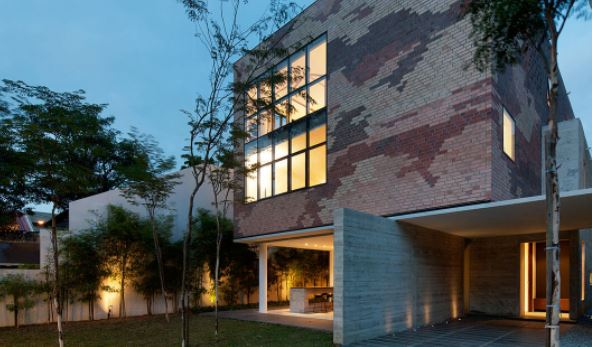Red Bean Architects

RBA is a Singapore-based creative firm of architects and designers. We’re old-school artisans imagining a cutting-edge metropolis of the future.
We create forms and places that are both useful and sustainable, while also empowering the people that utilize them. Any proposal that works within the context of a compassionate and sustainable urbanization is appealing to us.
The practice was created to provide an optimal setting for the Architect to devote his or her full attention to every material element. The RBA is in the process of finishing a number of houses in Singapore, as well as recreating a number of ancient institutional buildings.
Principal Teo Yee Chin started RBA in 2009, and the firm has already amassed an impressive body of work. We have concentrated on delivering each project extremely well, beginning with a rigorous design and documentation process through tight control of the construction activities on site, by limiting the number of projects we take on.
In 2020, Red Bean Architects became an LLP, and Zeeson Teoh joined as a partner.
The Board of Architects and the Singapore Institute of Architects have both registered RBA as a practice. We have ISO9001 Quality Management Certification.
OUR PRINCIPLES
Every piece of architecture should be an artistically cohesive entity that benefits society, engages the city, and adds to human history. Our work is based on a number of wide views.
Urbanism – We acknowledge that urbanisation is a recurring tendency in human development. How can a city portray size, density, and efficiency while simultaneously conveying drama, excitement, and humanity?
How can we comprehend the Earth’s dilemma and transform abstract concerns into solutions that may be implemented in daily life? How can we strike a balance between our wants and our resources?
History – In a fast growing Asia, understanding and valuing our history will be critical in avoiding a faceless modernity. How do they educate us how to develop new structures, apart from preserving existing ones?
Architects have an impact on individuals from all walks of life, from construction workers to those who use the places. With shifting circumstances and themes, how can we know what is right and what is wrong?
When RBA transforms plans into reality, we treat building as a precise science and apply the same level of thinking. We concentrate on subtle features that builders can achieve thanks to our understanding of building processes.
MANAGEMENT
Teo Yee Chin, the company’s principal architect and founder, is a pioneer in Singaporean architecture and urbanization. He thinks that architecture has the ability to change society. In the URA exhibition “20under45: The Third Edition,” Yee Chin was recognized one of 20 outstanding architects under 45 years old in 2017. In Singapore’s 2008 Board of Architects Professional Examination, he was the top candidate.
In 2003, Yee Chin received his Master of Architecture from Harvard University. He interned at William Lim Associates from 1999 to 2000. He worked with Kay Ngee Tan Architects from 2003 to 2005, refining his skills on modest projects like bookshops and residences. From
From 2005 until 2009, he worked at Architects 61, where he was involved with major projects such as the Newton One condominium, the Ocean Financial Centre, and the People’s Association Headquarters. In 2009, Red Bean Architects was established with the goal of better integrating design and project delivery.
Yee Chin has taught architecture and urbanization at both NUS and SUTD. He has shared his thoughts on human-centered design in the city at SIA Conferences, TEDx, Archifest, and numerous schools. Yee Chin designed and co-curated the Singapore Pavilion for the 15th International Architecture Exhibition at the Venice Biennale in 2016.
Yee Chin has also written architectural studies for the Straits Times and local publications. He has been the Chief Editor of The Singapore Architect, Singapore’s longest-running architectural publication, since 2017.











